Highlights from the Element x Dmail AMA
Dmail was delighted to join as a guest on the Element X space where they shared insights with Core Dao on a plethora of issues pertinent to web3 data and privacy.
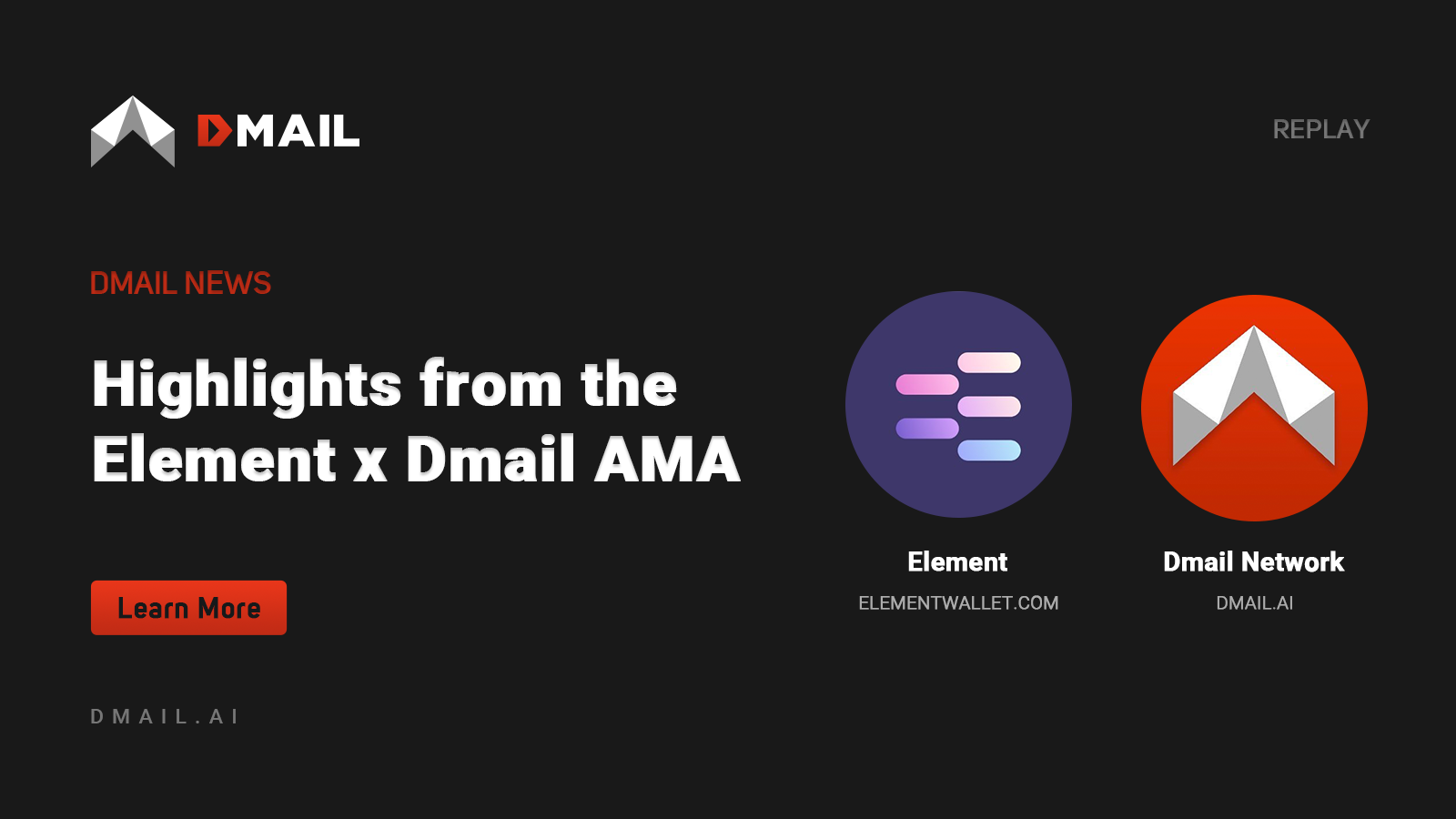
Date: March 31, 2025
Event: X Space – Element x Dmail
Topic: Privacy, Messaging, KYC, and What’s Next for Web3 Communication
On March 31, 2025, Dmail joined Element for a live X Space discussion focused on the future of communication in Web3. The session featured Dmail’s Dan, who shared deep insights into privacy, KYC, scalability, and the unique architecture powering Dmail’s decentralized messaging protocol. Below is a recap of the key themes and answers from the AMA.
Cross-Platform Data Sharing vs. User Privacy
The conversation opened with a look at Meta’s January update, which connected WhatsApp to its Accounts Center for cross-sharing between Instagram and Facebook. While this was marketed as a convenience, it highlighted a deeper issue—centralized platforms consolidating user data for commercial gain.
Dan explained that Dmail was built to offer a radically different model. All messages on Dmail are encrypted and stored off-chain, ensuring they can only be accessed by the intended recipient. There are no centralized databases for third parties to exploit. In a digital world where user data is routinely monetized, true ownership and control are becoming non-negotiable. For Web3 builders, Dan emphasized the importance of designing systems where privacy and data sovereignty are embedded from the start.
Tackling Spam and Phishing—Without Centralized Filters
When asked how Dmail deals with spam and phishing without relying on centralized surveillance, Dan outlined a layered and privacy-preserving strategy. Rather than reading users' messages to identify threats, Dmail relies on secure design and decentralized logic.
The platform incorporates user education, blockchain-based identity verification to prevent impersonation, and a community-driven reputation system that allows users to flag bad actors. Dan also introduced a unique feature: PID-based dual verification. In this system, both the email address and a unique user-specific PID must match for a message to be sent. Even if someone brute-forces an address, they can’t spoof the PID—making unsolicited spam virtually impossible.
KYC in Web3: Optional, Progressive, and Privacy-Respecting
As regulatory pressure grows, more Web3 platforms are exploring how to implement KYC. Dan explained that Dmail supports a balanced approach—KYC where needed, but never at the expense of user autonomy.
Dmail embraces optional KYC: users can verify themselves when required for access to certain services or jurisdictions, but those who value privacy are never forced into it. Importantly, Dmail treats KYC as a process, not a mandate. The team has already integrated with top-tier Web3 identity frameworks like Binance BABT, World ID, and Humanode. These partnerships support decentralized, privacy-preserving identity checks—enabling compliance without compromising sovereignty.
Solving the Scalability Challenge with ICP
Scalability is one of the core challenges in decentralized systems, but Dmail has tackled it through a two-layer architecture built on the Internet Computer Protocol (ICP).
At the infrastructure layer, ICP provides chain-key cryptography, canister smart contracts, and a reverse-gas model—supporting high-speed, cost-efficient computation. At the application layer, messages are encrypted and stored off-chain, verified on-chain, and deployed across 37 chains to distribute load.
Dmail is also integrating a Trusted Execution Environment (TEE), ensuring all encryption and decryption occurs securely between the user and the TEE. This two-tier structure allows Dmail to scale horizontally while preserving privacy, decentralization, and low latency.
Overcoming Technical and Adoption Barriers
When asked about the biggest challenges, Dan pointed to two fronts: infrastructure and education. From a technical standpoint, scaling encrypted communication in a decentralized environment is complex. Unlike centralized providers that can batch-process messages, Dmail must encrypt and verify each transaction independently.
From a user perspective, centralized platforms are still the default. Many users don’t yet fully understand the risks they’re taking by using Web2 email services. Educating them on the benefits of decentralized, encrypted alternatives remains an ongoing priority.
Common Misconceptions About Decentralized Messaging
Dan addressed a few myths that persist in the space. First, the idea that blockchain-based messaging is public is simply false—Dmail uses full end-to-end encryption. Only intended recipients can access message content.
Second, there’s a misconception that decentralized apps are too complex. Dmail’s interface is designed to feel as seamless as any Web2 email platform, while delivering far greater privacy, ownership, and control.
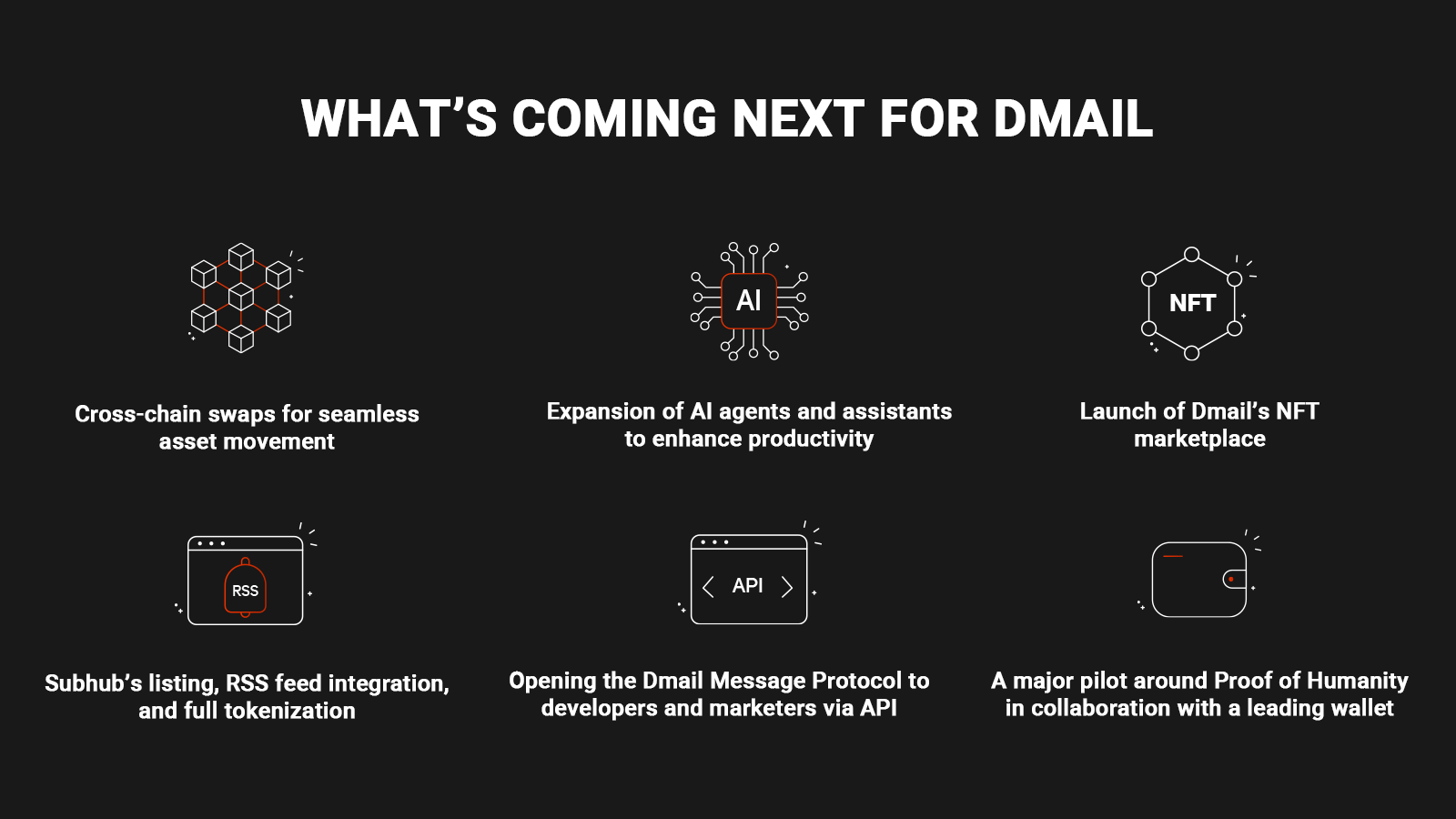
What’s Coming Next for Dmail
Dan also shared a preview of what users and developers can look forward to:
- Cross-chain swaps for seamless asset movement
- Expansion of AI agents and assistants to enhance productivity
- Launch of Dmail’s NFT marketplace
- Subhub’s listing, RSS feed integration, and full tokenization
- Opening the Dmail Message Protocol to developers and marketers via API
- A major pilot around Proof of Humanity in collaboration with a leading wallet
There are also several developments still under NDA, which Dan hinted could be game-changing for the broader ecosystem.
Final Thoughts
Dan closed the session with a call to action: switch to encrypted, decentralized messaging. Stop relying on platforms that monetize your communications. Take control—because privacy is only lost when users choose to give it away.
Thanks again to Element for hosting this insightful AMA and to everyone who tuned in. As the Web3 space continues to evolve, Dmail remains committed to delivering a secure, private, and decentralized future for messaging.

Connect with Dmail: Website | Twitter | Discord | Github | Telegram


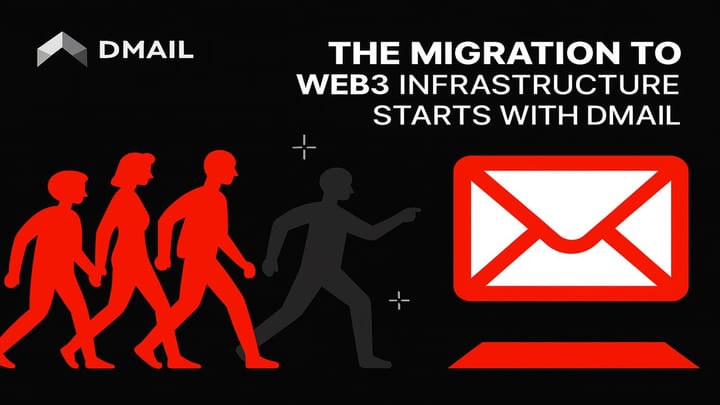
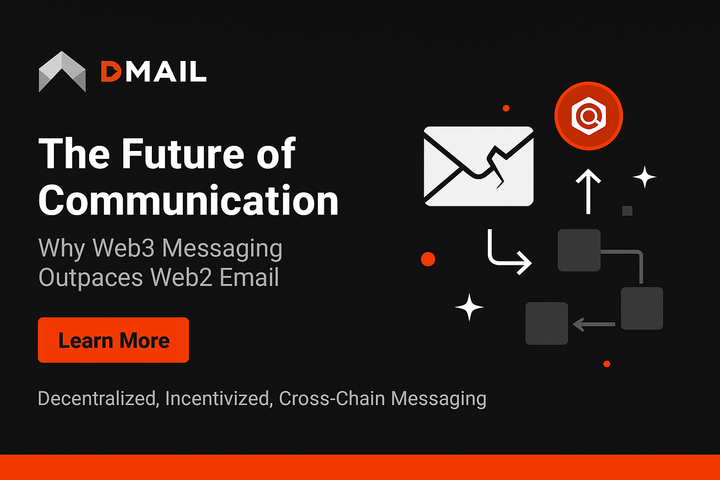
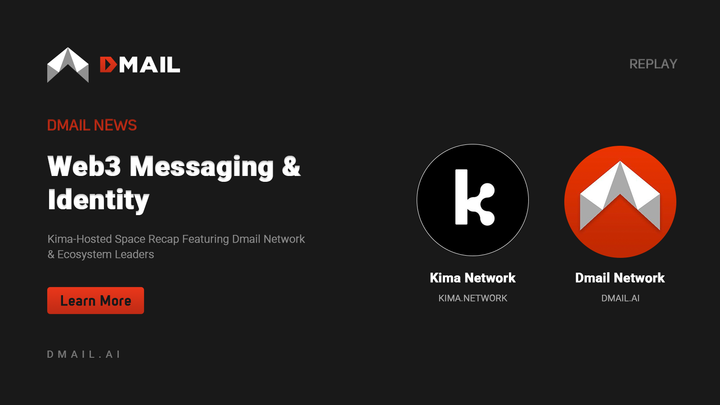
Comments ()